
| Recorded by: Jeff Niznik, Kaitlyn Elliott on 2025-10-11
Yancey Co.
Comment: | 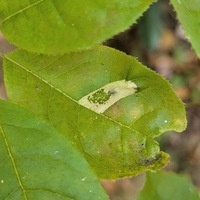
| Recorded by: Jeff Niznik, Kaitlyn Elliott on 2025-10-11
Yancey Co.
Comment: |
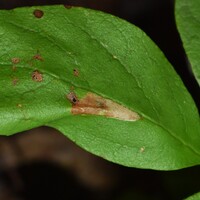
| Recorded by: David George, Jeff Niznik, Stephen Dunn on 2024-08-02
Chatham Co.
Comment: | 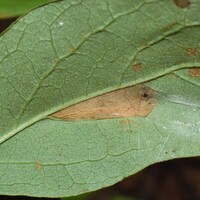
| Recorded by: David George, Jeff Niznik, Stephen Dunn on 2024-08-02
Chatham Co.
Comment: |

| Recorded by: Tracy Feldman on 2024-06-21
Chatham Co.
Comment: | 
| Recorded by: Jeff Niznik on 2024-06-15
Scotland Co.
Comment: |

| Recorded by: Jeff Niznik on 2024-06-15
Scotland Co.
Comment: | 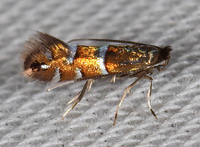
| Recorded by: Jim Petranka on 2024-06-13
Madison Co.
Comment: |

| Recorded by: Jim Petranka on 2024-06-06
Madison Co.
Comment: | 
| Recorded by: Jim Petranka on 2023-04-18
Madison Co.
Comment: Adult was reared from an occupied mine on Sourwood. Mine on Sept. 9, 2022; adult on April 18, 2023. |

| Recorded by: Jim Petranka and Becky Elkin on 2022-10-04
Transylvania Co.
Comment: | 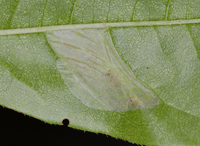
| Recorded by: Jim Petranka and Becky Elkin on 2022-10-04
Transylvania Co.
Comment: |

| Recorded by: Jim Petranka and Becky Elkin on 2022-09-20
Haywood Co.
Comment: | 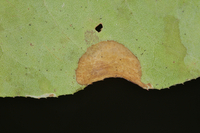
| Recorded by: Jim Petranka and Becky Elkin on 2022-09-20
Haywood Co.
Comment: |

| Recorded by: Jim Petranka on 2022-09-09
Madison Co.
Comment: Occupied mine was in a Sourwood leaf; adult emerged on April 16, 2023 after overwintering in a refrigerator. | 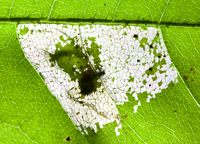
| Recorded by: Jim Petranka on 2022-09-09
Madison Co.
Comment: Occupied mine was in a Sourwood leaf; adult emerged on April 16, 2023 after overwintering in a refrigerator. |
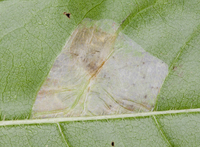
| Recorded by: Jim Petranka on 2022-09-09
Madison Co.
Comment: Underside of a Sourwood leaf with an occupied mine. | 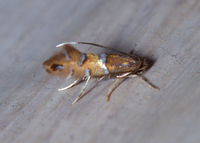
| Recorded by: Jim Petranka on 2022-06-25
Madison Co.
Comment: |
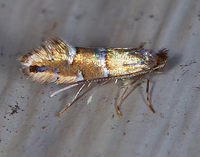
| Recorded by: Jim Petranka on 2022-06-24
Madison Co.
Comment: | 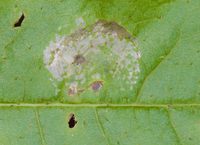
| Recorded by: Jim Petranka on 2021-10-10
Buncombe Co.
Comment: |
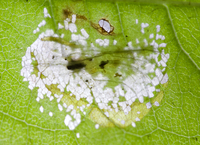
| Recorded by: Jim Petranka on 2021-10-10
Buncombe Co.
Comment: | 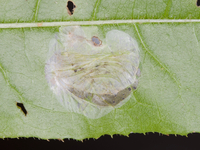
| Recorded by: Jim Petranka on 2021-10-10
Buncombe Co.
Comment: |
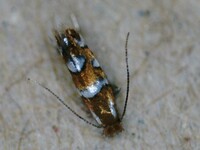
| Recorded by: Tracy S Feldman on 2021-08-24
Scotland Co.
Comment: Reared from tentiform mines collected from Gaylussacia frondosa on 8/18/2021. Adults emerged on 8/24/2021 and 8/26/2021. | 
| Recorded by: Tracy S Feldman on 2021-08-24
Scotland Co.
Comment: Reared from tentiform mines collected from Gaylussacia frondosa on 8/18/2021. Adults emerged on 8/24/2021 and 8/26/2021. |

| Recorded by: Tracy S Feldman on 2021-08-18
Scotland Co.
Comment: A tentiform leaf mine on the underside of Gaylussacia frondosa. | 
| Recorded by: Tracy S Feldman on 2021-08-18
Scotland Co.
Comment: A tentiform leaf mine on the underside of Gaylussacia frondosa. |
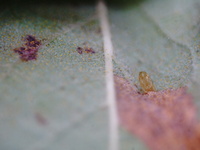
| Recorded by: Tracy S Feldman on 2021-08-18
Scotland Co.
Comment: | 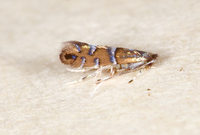
| Recorded by: Jim Petranka on 2021-04-20
Madison Co.
Comment: This adult was reared from Sourwood; leaf mine was collected on Sept 25, 2020; overwintered in refrigerator; adult emerged on April 20, 2021 (see companion photo of the mine from 2020-09-25). |
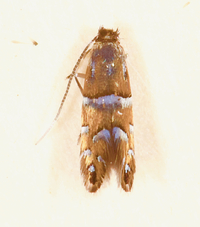
| Recorded by: Jim Petranka on 2021-04-20
Madison Co.
Comment: This adult was reared from Sourwood; leaf mine was collected on Sept 25, 2020; overwintered in refrigerator; adult emerged on April 20, 2021 (see companion photo of the mine from 2020-09-25). | 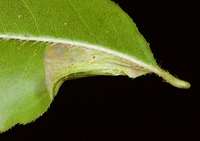
| Recorded by: Jim Petranka on 2020-09-25
Madison Co.
Comment: An occupied tentiform mine on the underside of a Sourwood leaf. A reared adult emerged on April 20, 2021 (see companion photo). |
|

 »
»
























